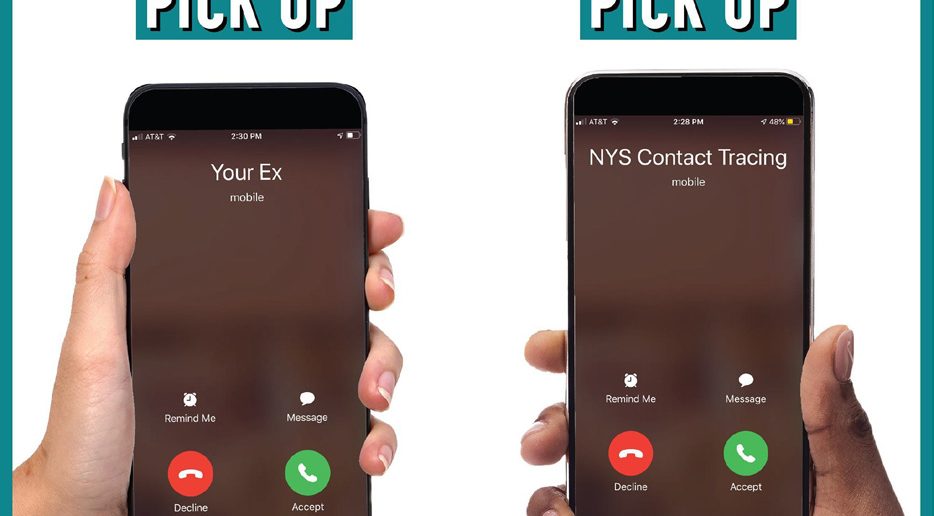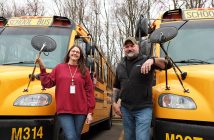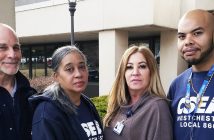POMONA — Rockland County’s contact tracing program made national news recently when attendees at a party connected to a COVID-19 outbreak initially refused to cooperate with contact tracers, the workers tasked with containing such outbreaks, until officials were forced to threaten legal action.
The widespread news coverage confirmed many were unaware of the public health practice, which has been used to track disease outbreaks ranging from HIV/AIDS to recent measles cases.
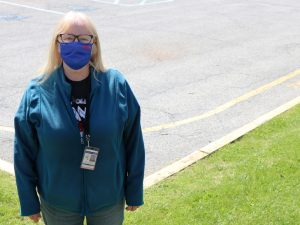
Rockland County Unit President Karen Nicholson
“Last year, we had quite the measles outbreak here, so contact tracing is something our members know very well,” said Rockland County Unit President Karen Nicholson.
Contact tracers are disease detectives. They work with patients to identify those with whom they’ve come in contact, notify those people of the outbreak and the need to quarantine, and conduct regular check-ins with the patients until their symptoms subside.
During the COVID-19 pandemic, contact tracers have also helped ensure those in quarantine get needed assistance with groceries, household supplies, and medical treatment and supplies.
One major challenge for those doing this vital work is the skepticism that has emerged, largely circulated on social media, with some wrongly believing contact tracing is more about government intrusion into people’s lives than its true purpose of protecting public health.
CSEA members step up for New York
While CSEA members took on contact tracing duties right away in many counties, things became more urgent when state officials said each county needed a certain number of people trained in the computer program used for this work in order for phased reopening to begin.
CSEA members came through in a big way, quickly completing online training offered Johns Hopkins University by the state’s deadline.
“Everyone really stepped up in May when we were told we needed a certain number of people completing the contact tracing training in order to begin the phases of reopening the state,” said Nicholson.
In Westchester County, home of the first major East Coast outbreak, workers from across county departments were amongst the over 800 completing the contact tracing training.
“We encouraged our members to take the training, because we felt it was going to help us and our county in the long run,” said Westchester County Unit President Karen Pecora.
In Putnam County, CSEA members took time on Memorial Day weekend to complete the training, due to them being given last-minute notice.
“Our staff stepped up late that Saturday afternoon to do the mandated seven-hour tracing course, which had to be completed by Sunday evening, in order to get Putnam County into the next phase of reopening,” said Putnam County Local President Jane Meunier, who works in the county Health Department. “This was above and beyond the call of duty, but we did it for the county and our residents we serve.”
Contact tracing’s profound effect
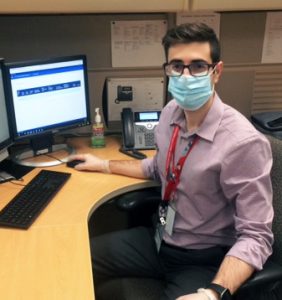
Westchester County Unit member Thomas Peer
Westchester County Unit member Thomas Peer is one of those who stepped up when the call for help came. As a medical analyst for the Health Department, Peer normally works on analyzing data for the reports his department publishes. While nursing staff at the department are the primary investigators during disease outbreaks, Peer and other co-workers are there to help when the workload increases.
“I have a master’s of public health [degree]in epidemiology, so this work is what my education prepared me for,” said Peer. “The work can be emotionally hard, but it’s worth it if you can stop one person from spreading the disease. One person, on average, infects two people. If you can shut that down, over time, that can have a profound effect.”
Looking ahead
With COVID-19 cases projected to increase this fall, CSEA members working in the public field are urging New Yorkers to cooperate with contact tracing in order to help stop the spread of the virus.
Kathleen Percacciolo, supervising public health nurse for Putnam County, urged the public to answer the phone if they receive a call from a contact tracer, whose caller ID should read “NYS Contact Tracing” and come from the phone number (518) 387-9993.
“By participating with the contact tracers and answering your phone, you can save the life of your elderly neighbor, of your friend who has cancer, of the newborn down the street,” said Percacciolo. “Contact tracers are people too, so be kind and answer your phone. By doing your part, you will have a positive impact on saving lives.”
— Jessica Ladlee

